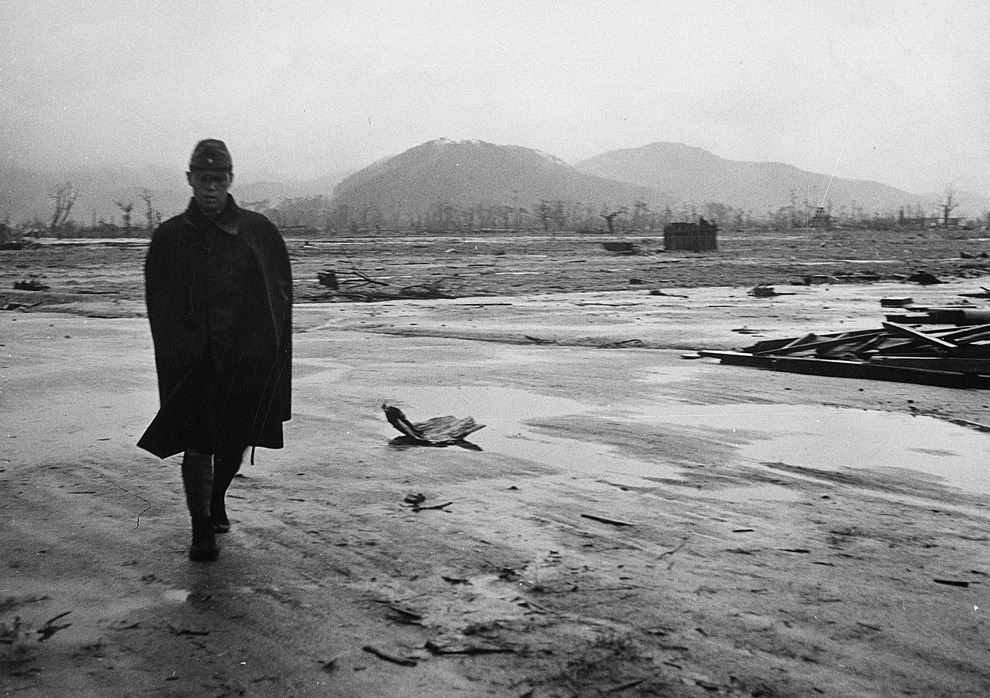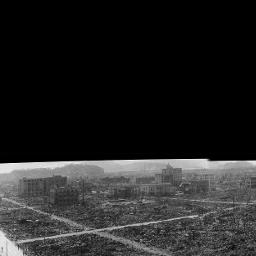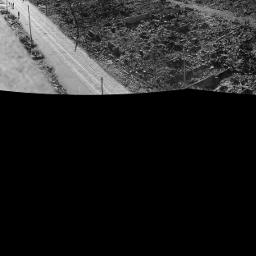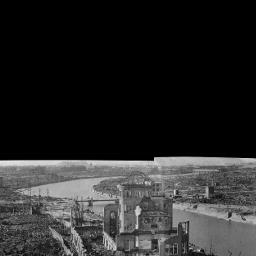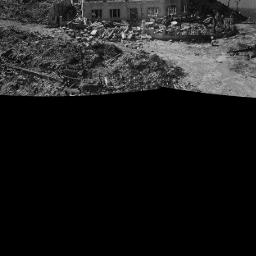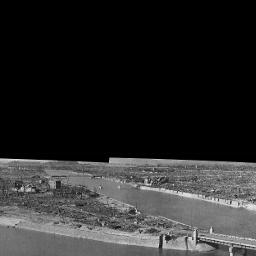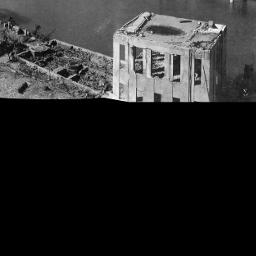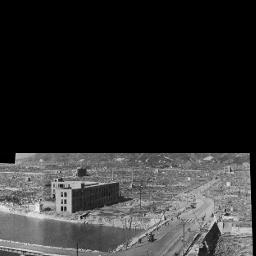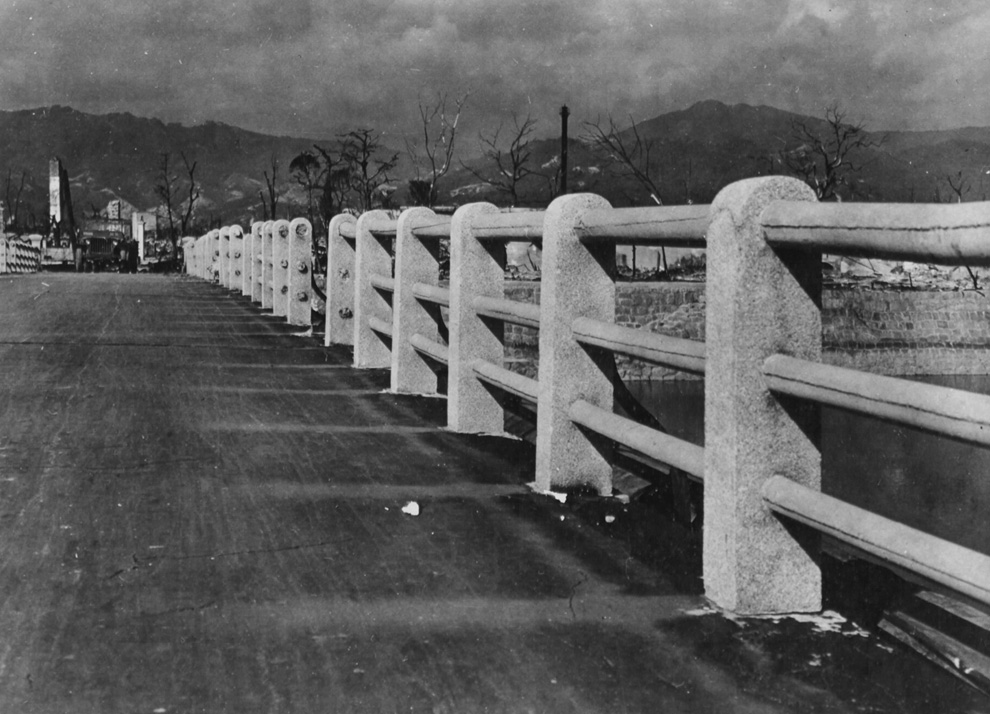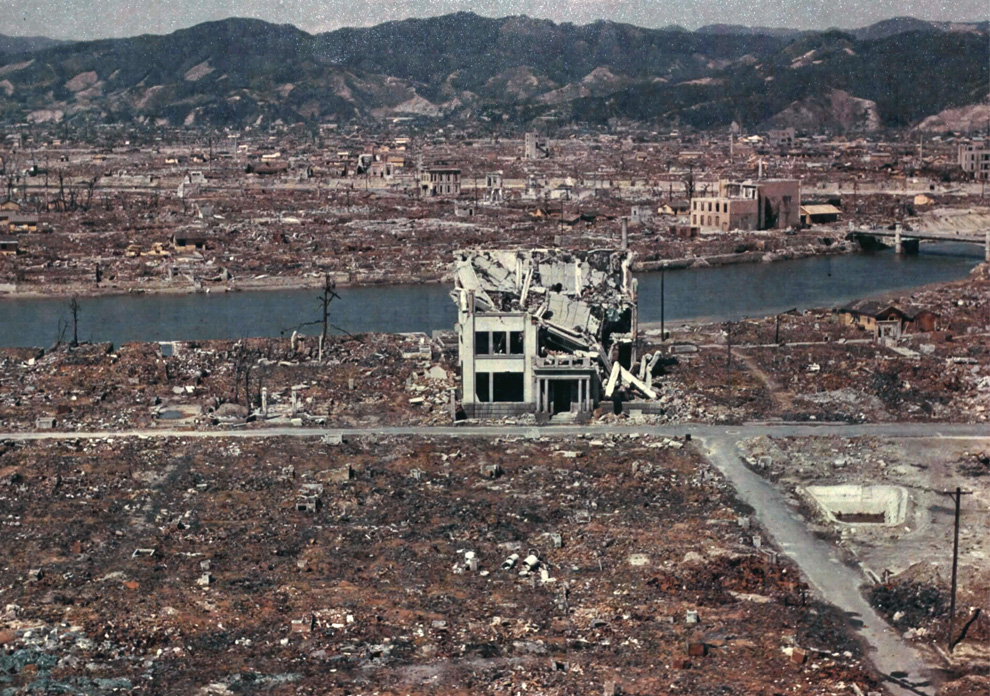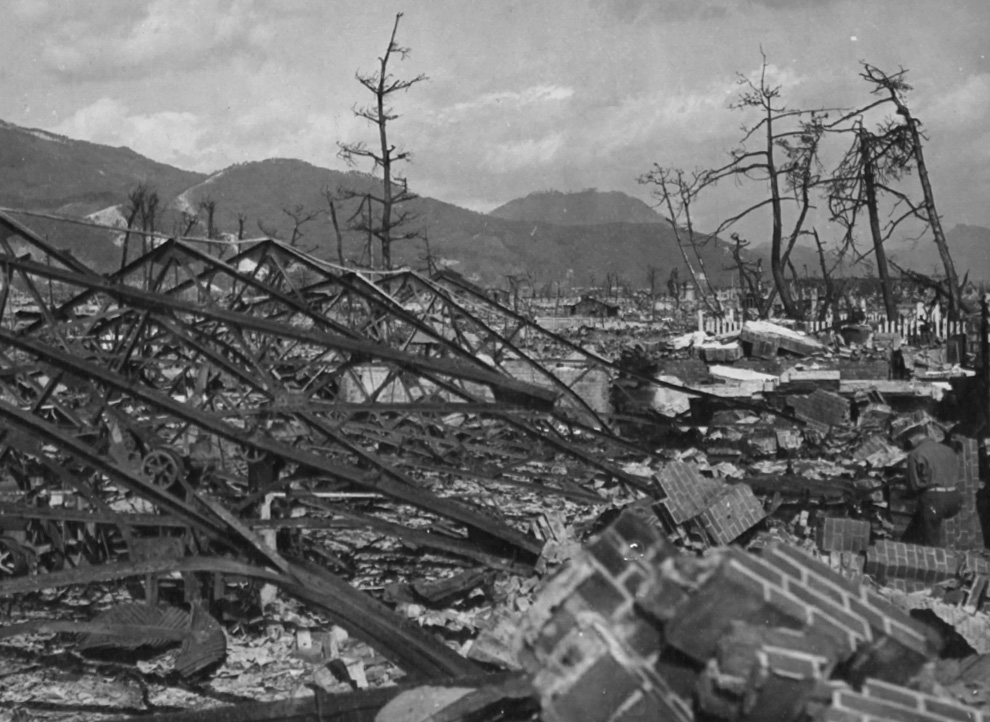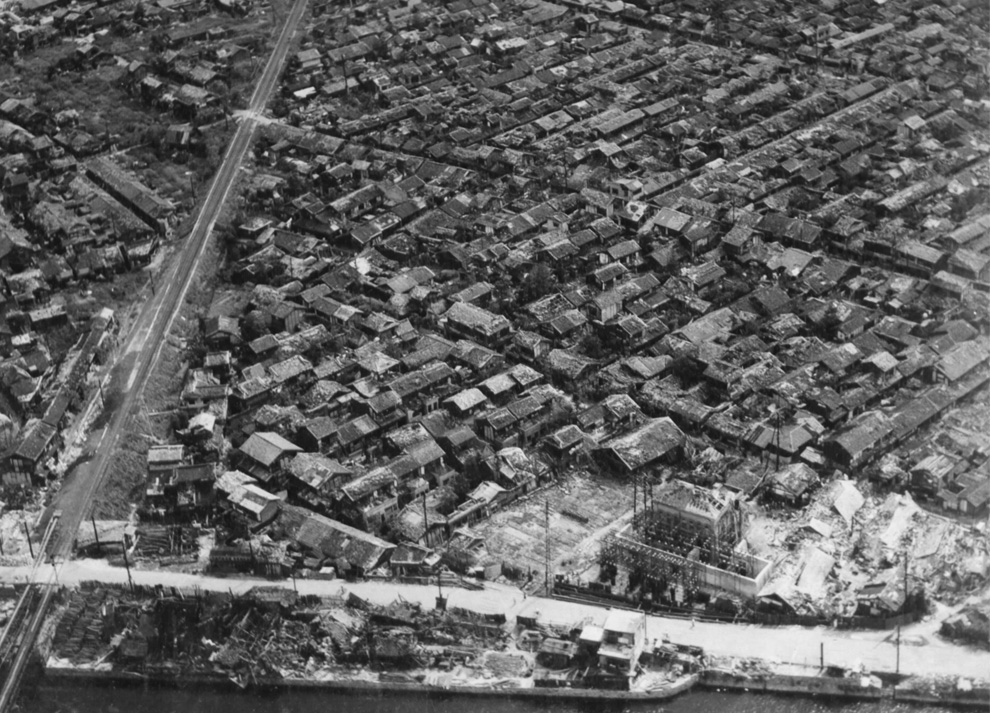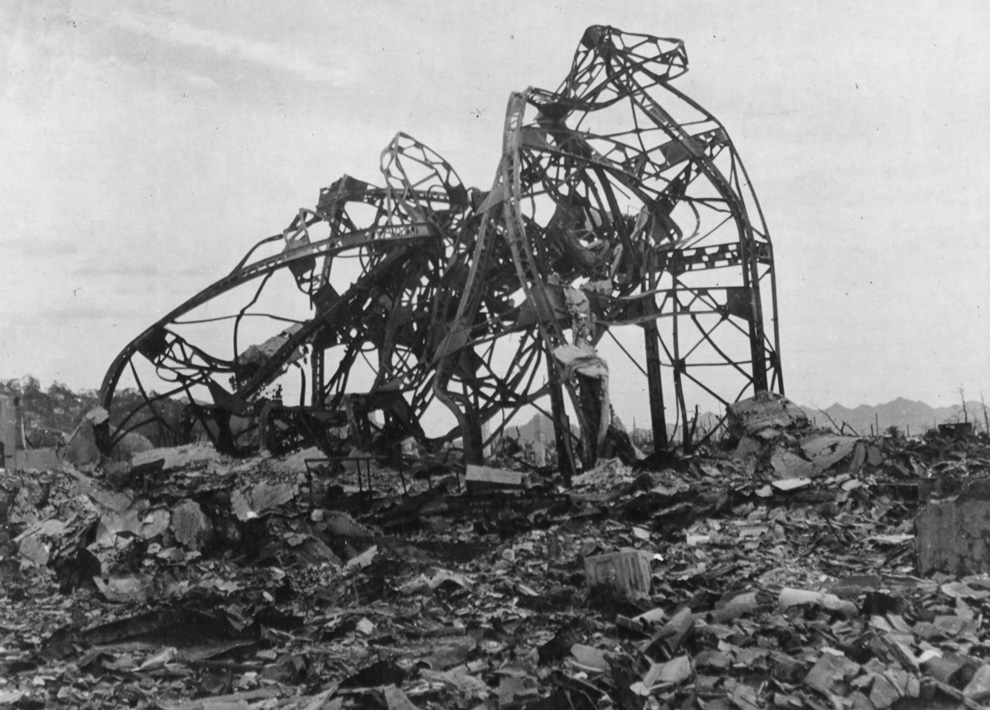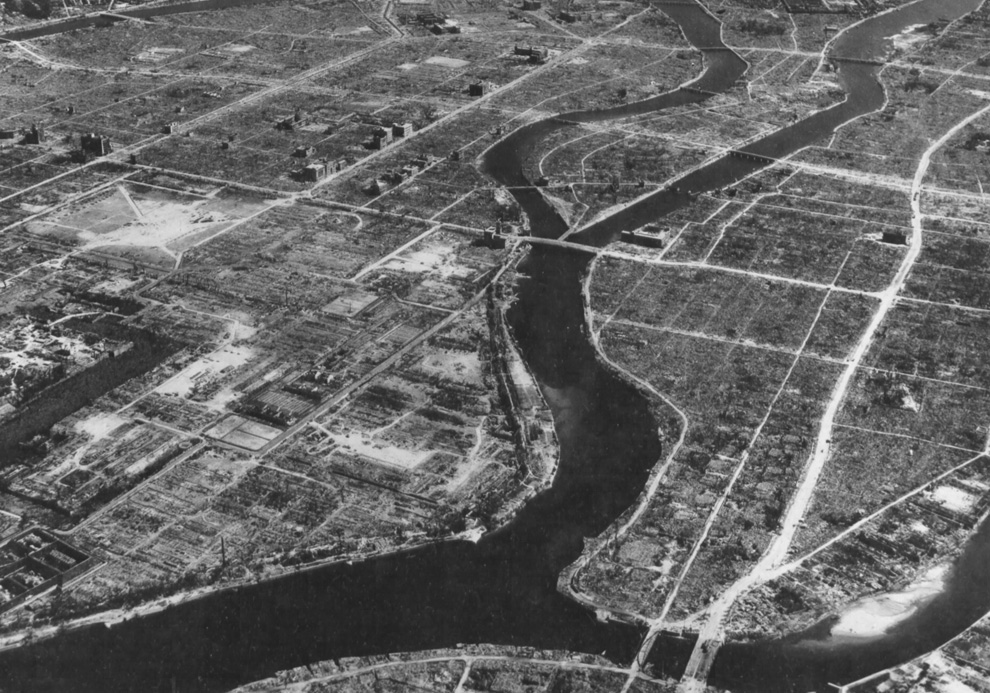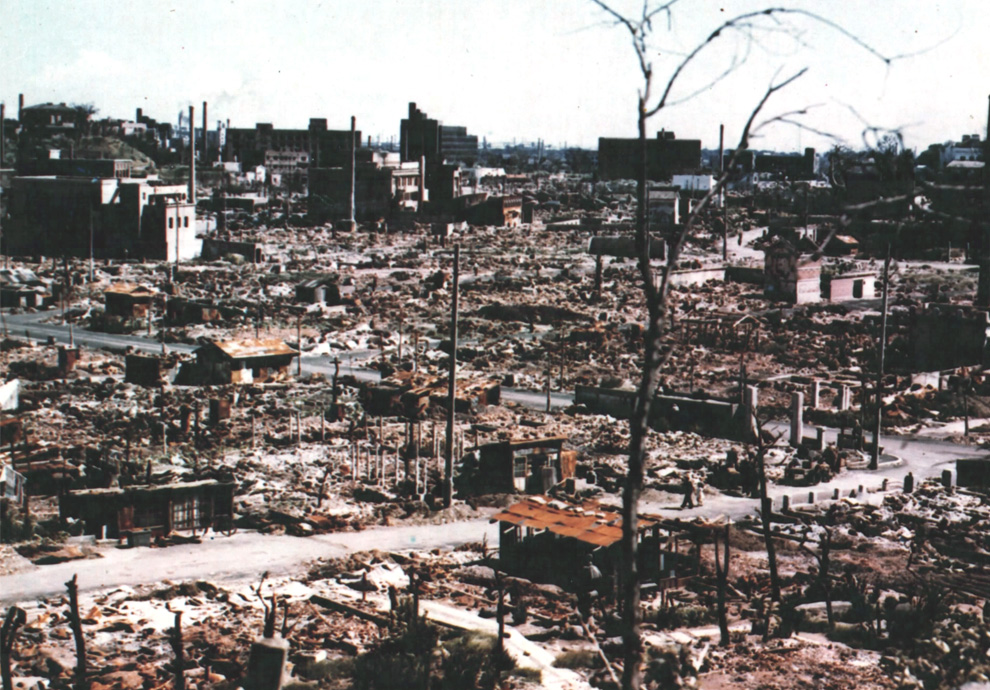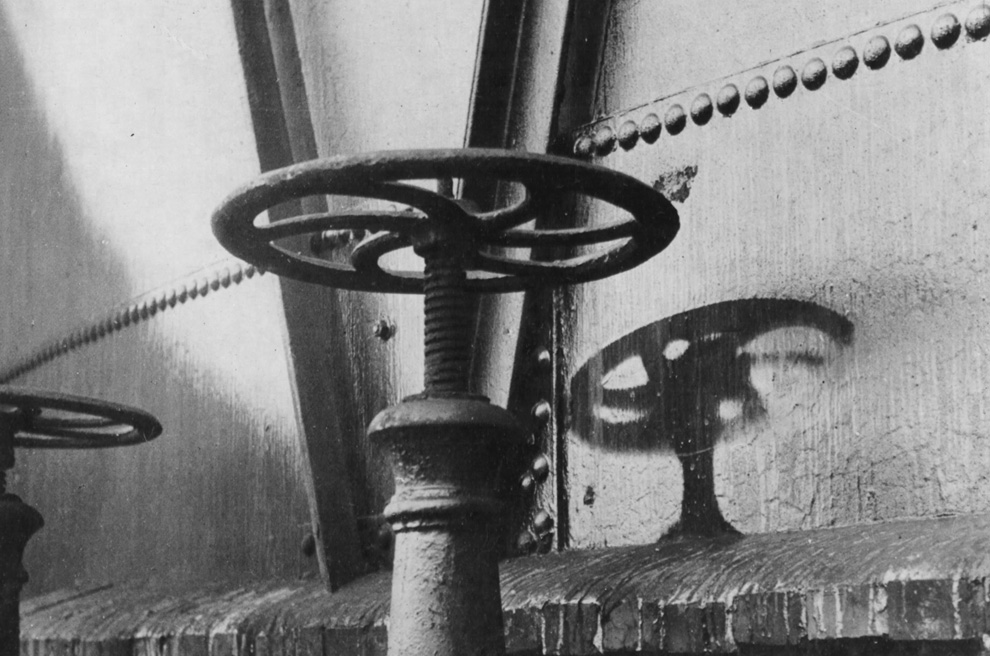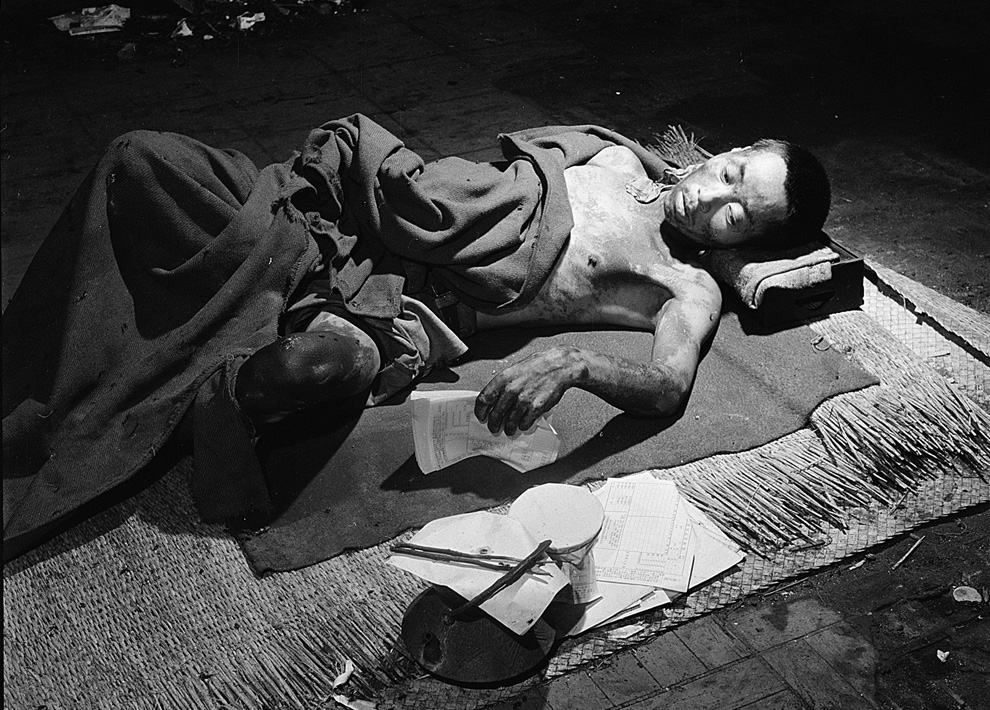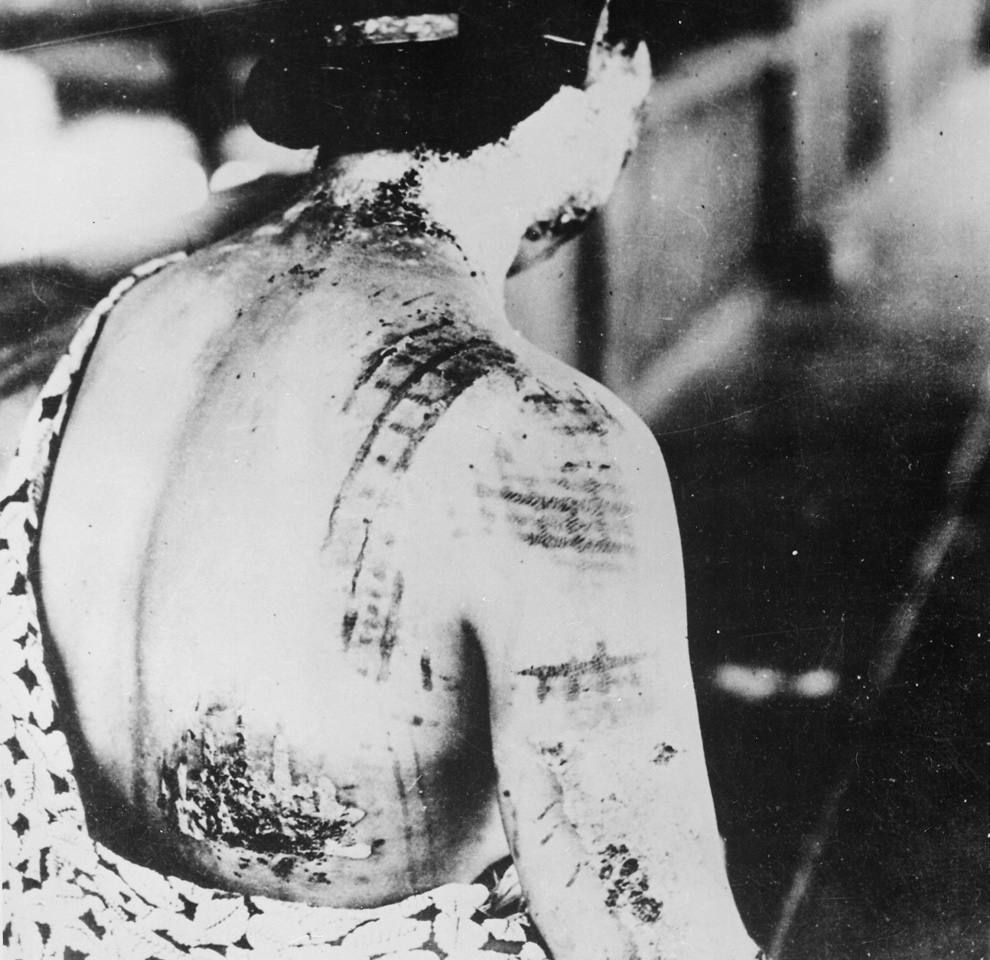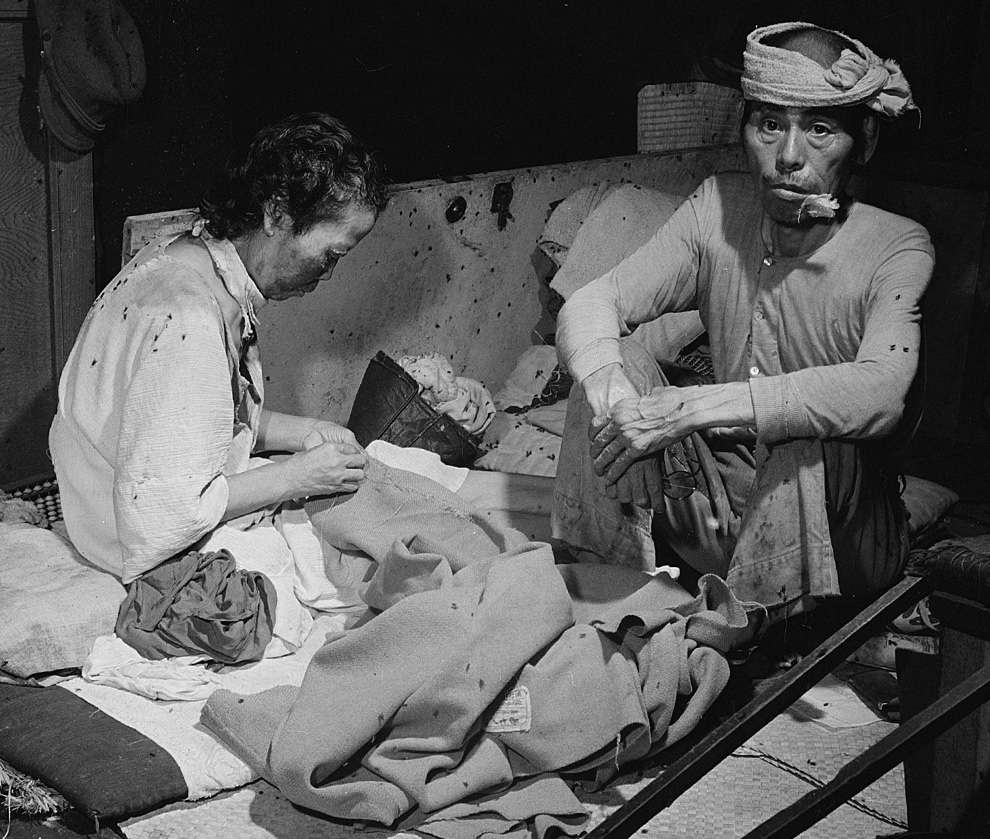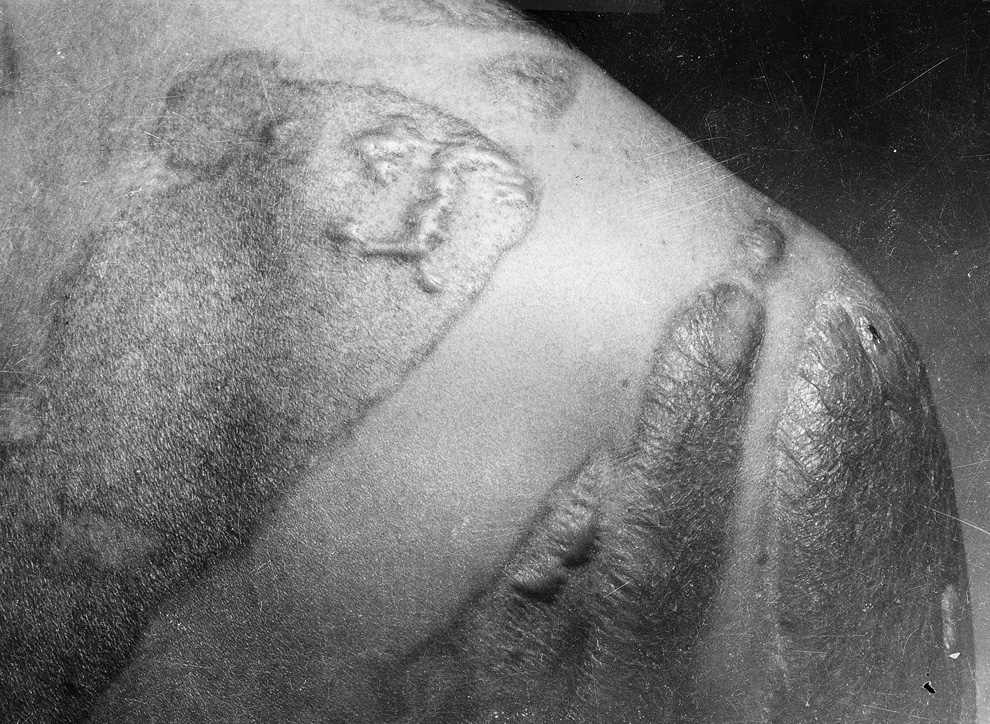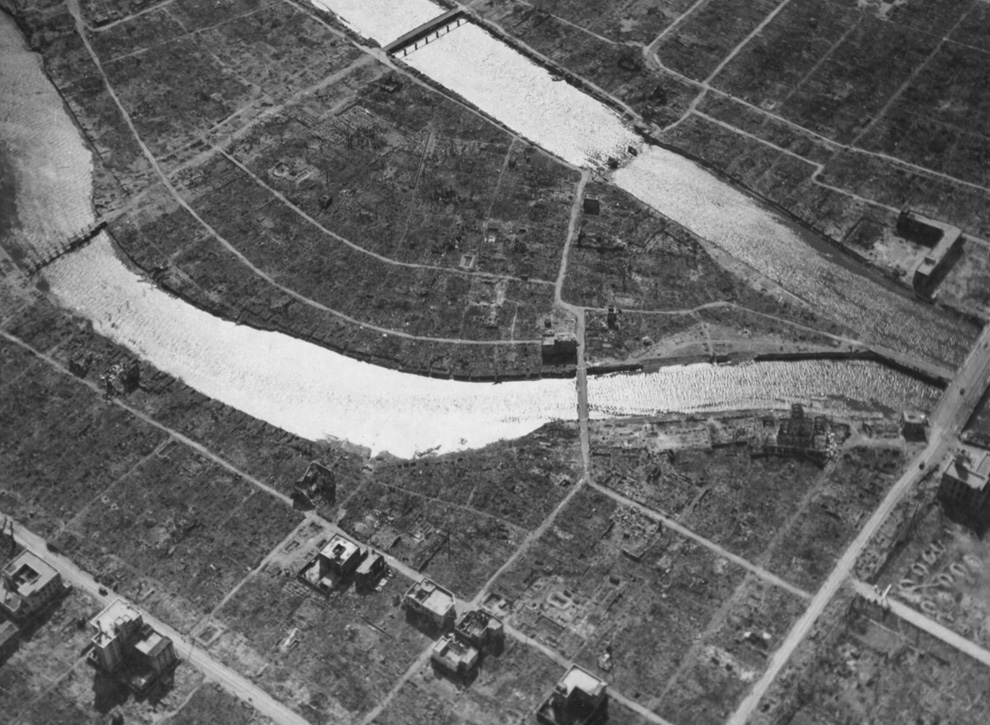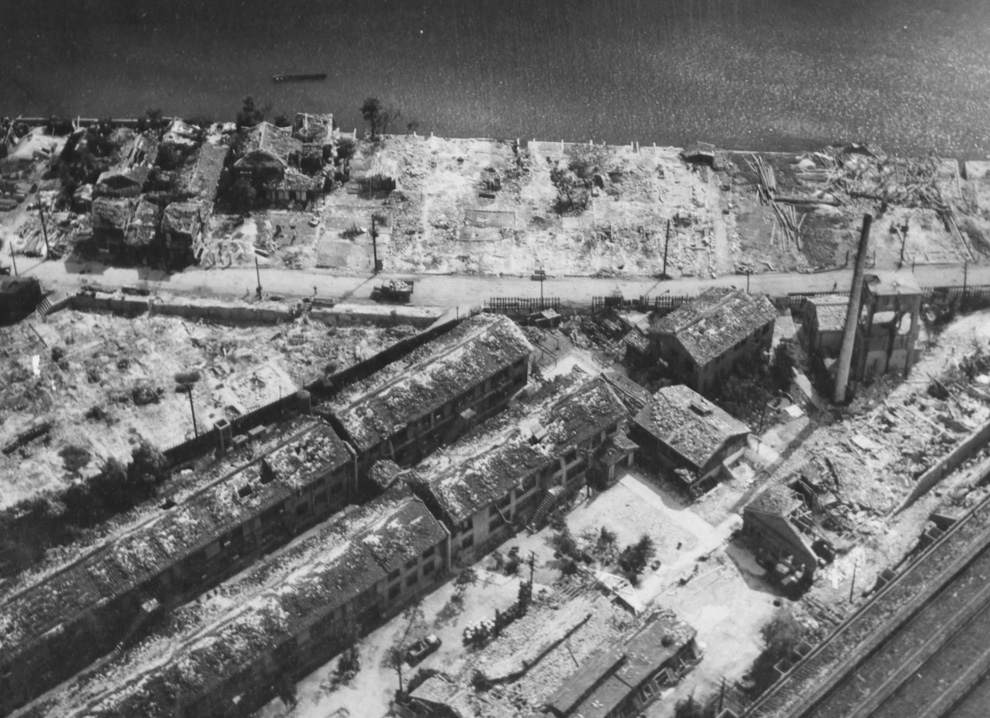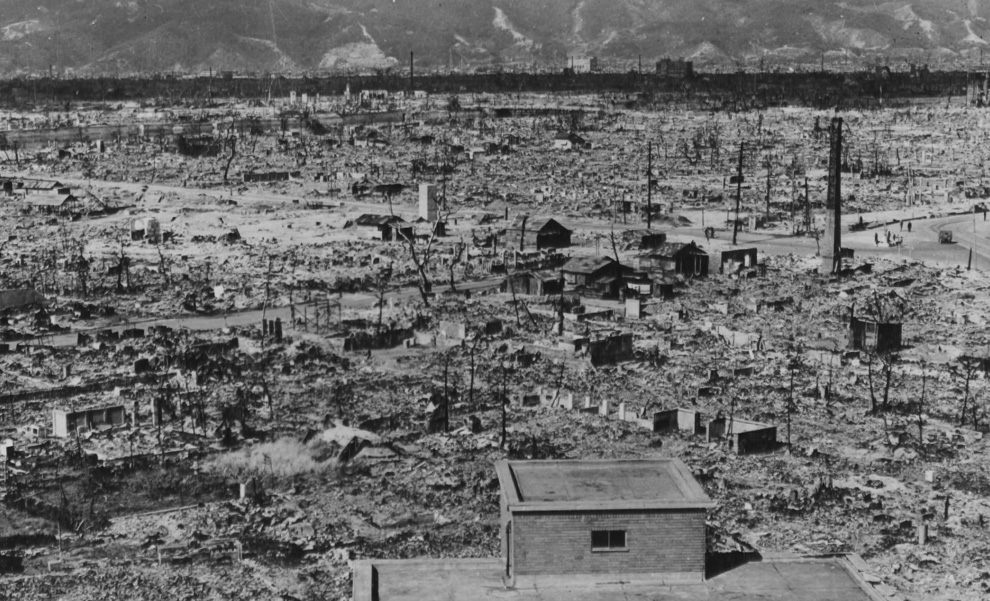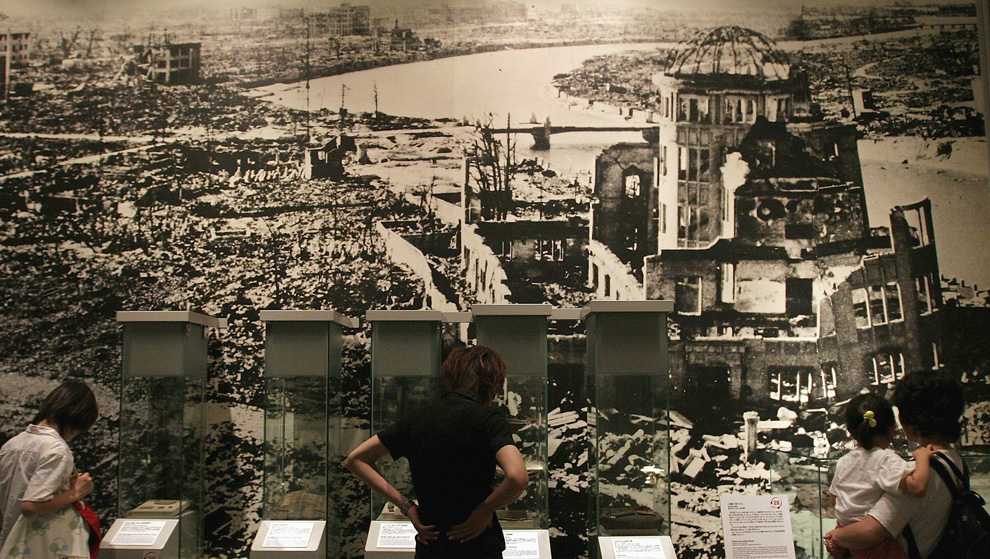共产档
MISH - MASH
正文
Hiroshima, 64 years ago
Tomorrow, August 6th, marks 64 years since the atomic bombing of Hiroshima, Japan by the United States at the end of World War II. Targeted for military reasons and for its terrain (flat for easier assessment of the aftermath), Hiroshima was home to approximately 250,000 people at the time of the bombing. The U.S. B-29 Super fortress bomber "Enola Gay"took off from Tinian Island very early on the morning of August 6th,carrying a single 4,000 kg (8,900 lb) uranium bomb codenamed "Little Boy". At 8:15 am, Little Boy was dropped from 9,400 m (31,000 ft) above the city, free falling for 57 seconds while a complicated series of fuse triggers looked for a target height of 600 m (2,000 ft) above the ground. At the moment of detonation, a small explosive initiated a super-critical mass in 64 kg (141 lbs) of uranium. Of that 64 kg, only.7 kg (1.5 lbs) underwent fission, and of that mass, only 600 milligrams was converted into energy - an explosive energy that seared everything within a few miles, flattened the city below with a massive shock wave, set off a raging firestorm and bathed every living thing in deadly radiation. Nearly 70,000 people are believed to have been killed immediately, with possibly another 70,000 survivors dying of injuries and radiation exposure by 1950. Today, Hiroshima houses a Hiroshima Peace Memorial Museum near ground zero, promoting a hope to end the existence of all nuclear weapons. (34 photos total)
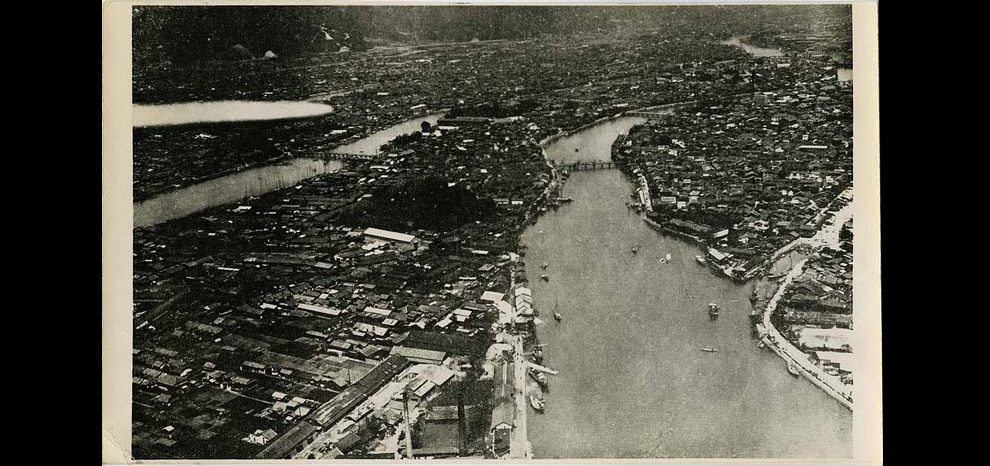
An aerial view of Hiroshima, viewed some time shortly before the bomb was dropped on it in August of 1945. The scene shows a very densely built-up area of the city on the Motoyasu River looking upstream.(Hiroshima: The United States Strategic Bombing Survey Archive,International Center of Photography, Purchase, with funds provided by the ICP Acquisitions Committee, 2006) #
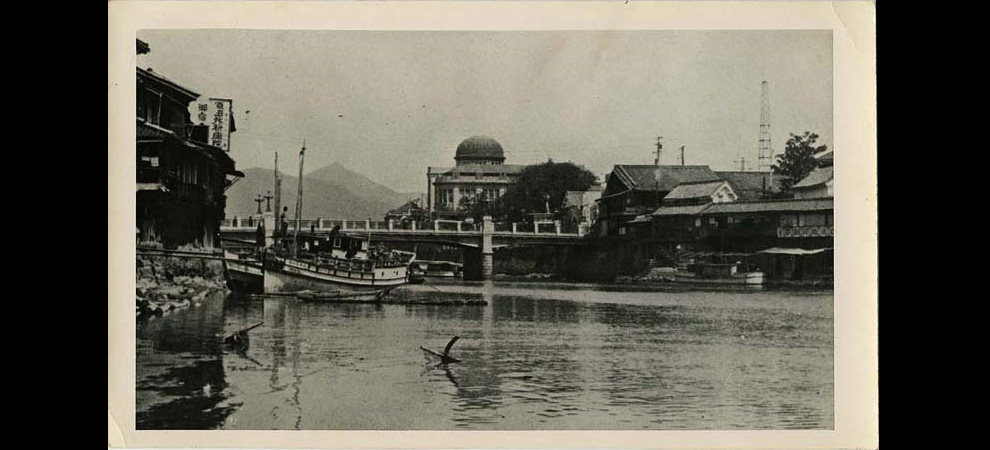
An early photograph of Hiroshima, before August 1945, looking upstream on the Motoyasu River toward what would become the most famous of all Hiroshima landmarks - the domed Hiroshima Prefectural Industrial Promotion Hall, immediately adjacent to ground zero. The building was originally designed by Czech architect Jan Letzel and completed in April 1915. (Hiroshima: The United States Strategic Bombing Survey Archive, International Center of Photography, Purchase, with funds provided by the ICP Acquisitions Committee, 2006) #
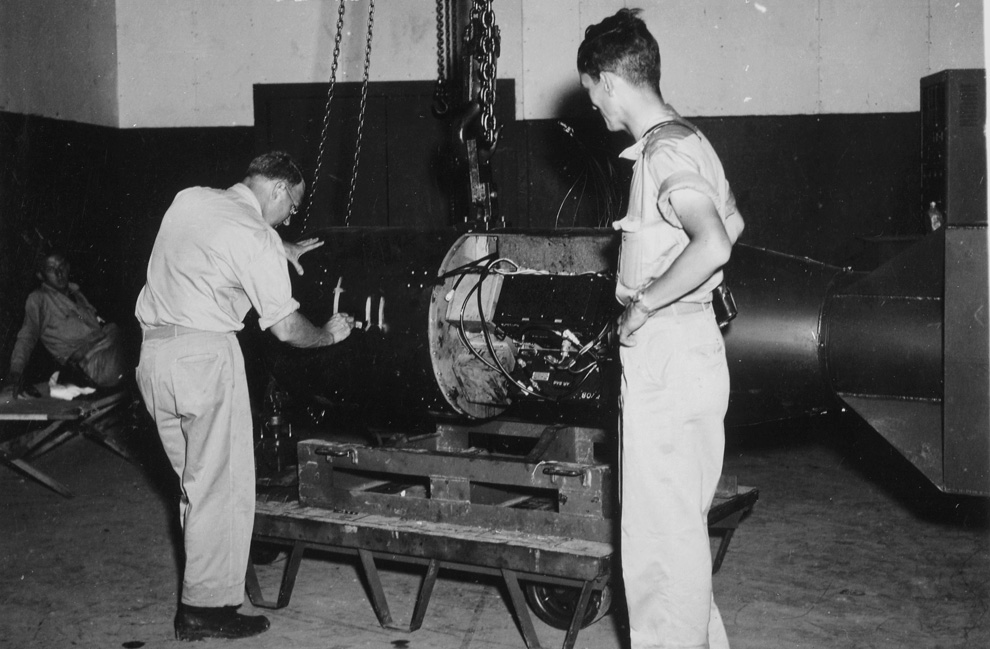
Commander A.F. Birch (left), shown numbering the bomb code named "Little Boy" unit L-11, before loading it on trailer in Assembly Bldg. #1, prior to it being loaded aboard the B-29 Super fortress bomber "Enola Gay", on the base of the 509th Composite Group at Tinian Island in the Marianas Islands in 1945. Physicist Dr. Norman Ramsey stands at right - he would later go on to win the Nobel Prize in Physics in 1989. (U.S. National Archives) #
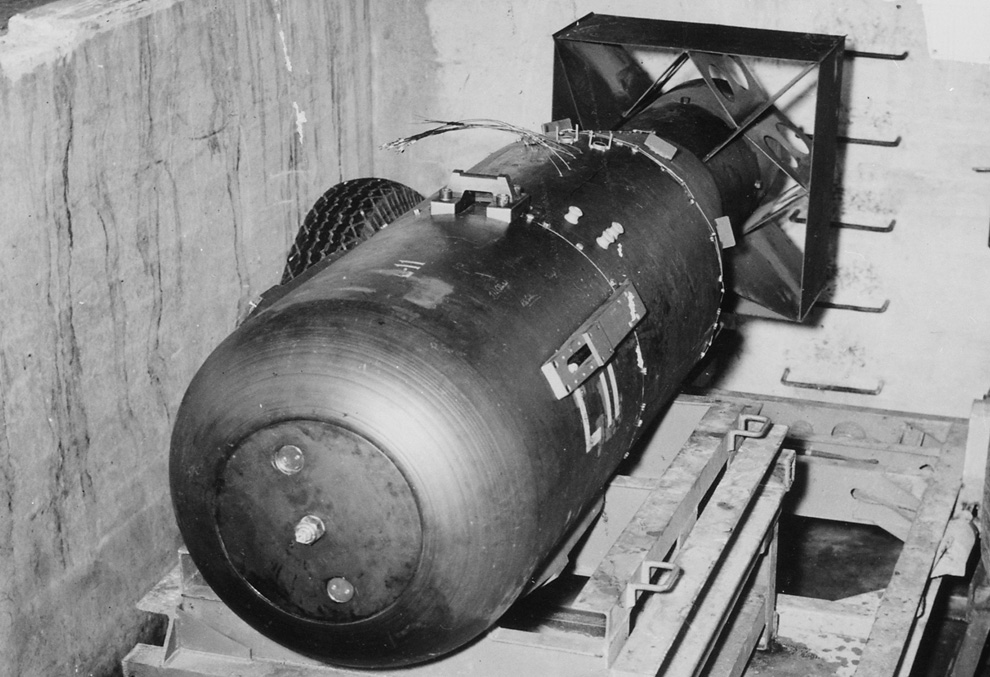
"Little Boy" unit rests on a trailer cradle in a pit below the open bomb bay doors of the B-29 Super fortress bomber "Enola Gay" on the 509thComposite Group base at Tinian Island in the Marianas Islands in 1945.Little Boy was 3 m (10 ft) long, and weighed 4,000 kg (8,900 lb), butonly carried contained 64 kg (141 lbs) of uranium which would be usedto create a nuclear chain reaction, and resulting explosion. (U.S.National Archives) #

Shortly after 8:15 am, August 5, 1945, looking down on the rising smoke from the atomic explosion above the city of Hiroshima from one of two U.S.Air Force bombers from the 509th Composite Group. By the time this photo was taken, the flash of light and intense heat from a fireball370 m (1,200 ft) diameter had already taken place, and an intense shock wave radiating out faster than the speed of sound was dissipating,having done most of its damage to ground structures and people in a circle 3.2 km (2 mi) in diameter. (U.S. National Archives) #
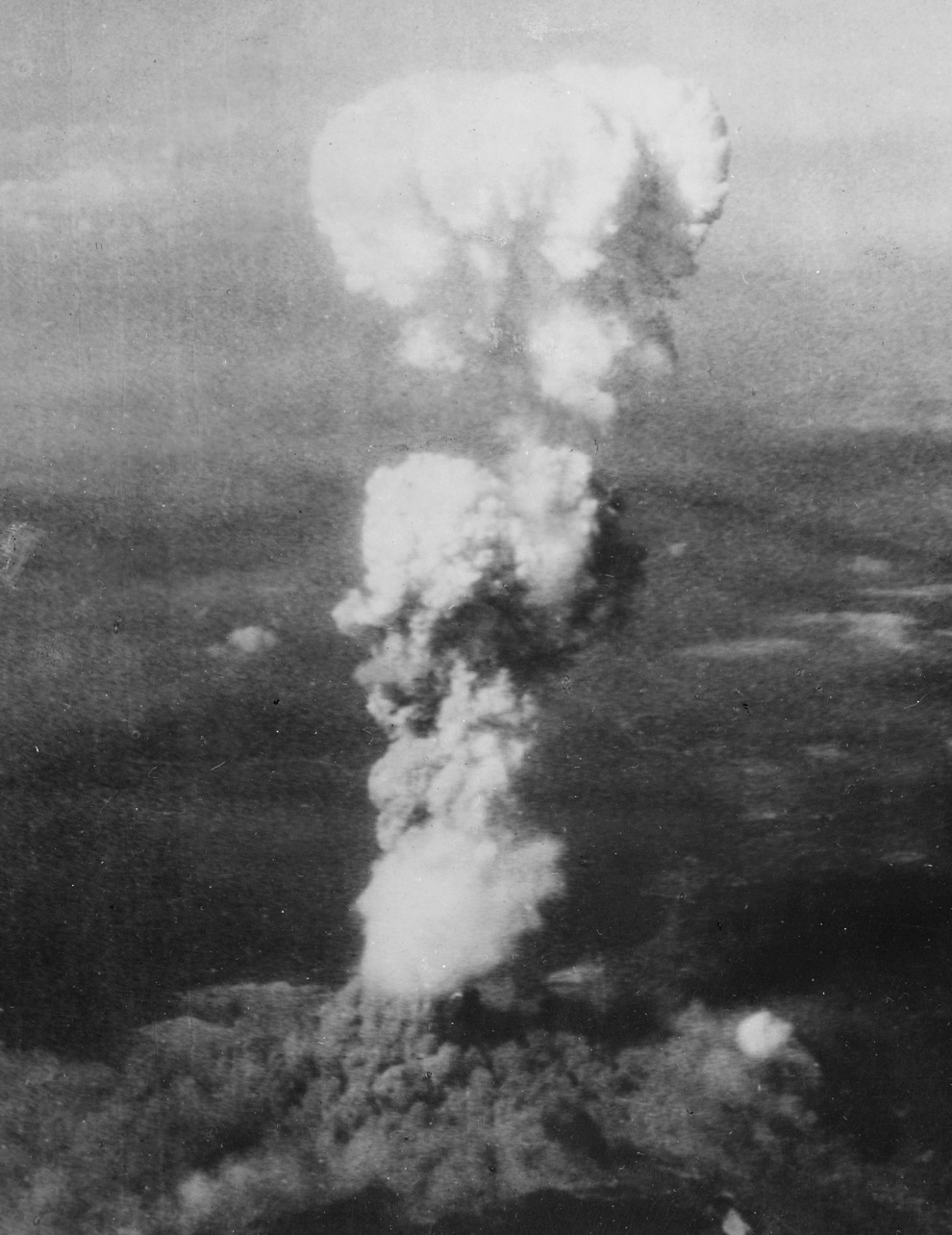
Shortly after 8:15 am, August 5, 1945, looking back at the growing "mushroom"cloud above Hiroshima. When a portion of the uranium in the bomb underwent fission, and was transformed instantly into an energy of about 15 kilotons of TNT (about 6.3 × 1013 joules), heating a massive fireball to a temperature of 3,980 C (7,200 F). The superheated air and smoke rapidly rose through the atmosphere like a giant bubble, dragging a column of smoke up with it. By the time this photo was made, smoke had billowed 20,000 feet above Hiroshima while smoke from the burst of the first atomic bomb had spread over 10,000feet on the target at the base of the column. (U.S. National Archives) #

A view of destruction in Hiroshima, in the autumn of 1945, across one of the branches of the river that cut across the delta the city is centered on. (Hiroshima: The United States Strategic Bombing Survey Archive, International Center of Photography, Purchase, with funds provided by the ICP Acquisitions Committee, 2006) #
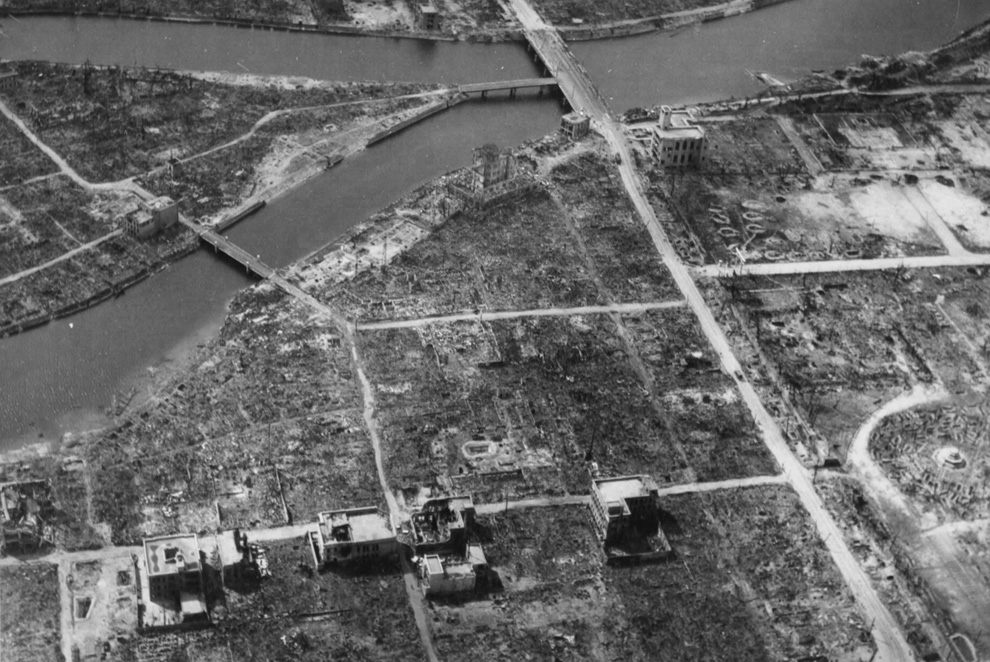
A View Of ground zero in Hiroshima in the autumn of 1945, showing total destruction resulting from dropping of the first atomic bomb. The hypo center (point directly below the bomb explosion) is visible in this photograph, approximately above the Y-shaped intersection at center-left. (U.S. National Archives) #
GMapImgCutter CASA - Terms of Use
Click, drag and zoom above to better view this panoramic view of a destroyed Hiroshima, made up of five photographs taken from the roof of the Chamber Of Commerce And Industry Building on October 6th, 1945, only 2months after the bombing. At far left are the ruins of the Geibi Bank Building and Shima Hospital. At center is the ruined structure of the Prefectural Industrial Promotion Hall, beyond it a bridge across the Matoyasu River, just about at the hypo center of the explosion. At lower right is the still-standing structure of the Red Cross building, its roof depressed from the shock wave. At far right is the T Bridge at the meeting of the Matayashu River and the Ota River. To view the full panorama image (10,000 pixels wide), click here. To see the original five component photos at 2,500px, click 1, 2, 3, 4, 5. (U.S. National Archives) #
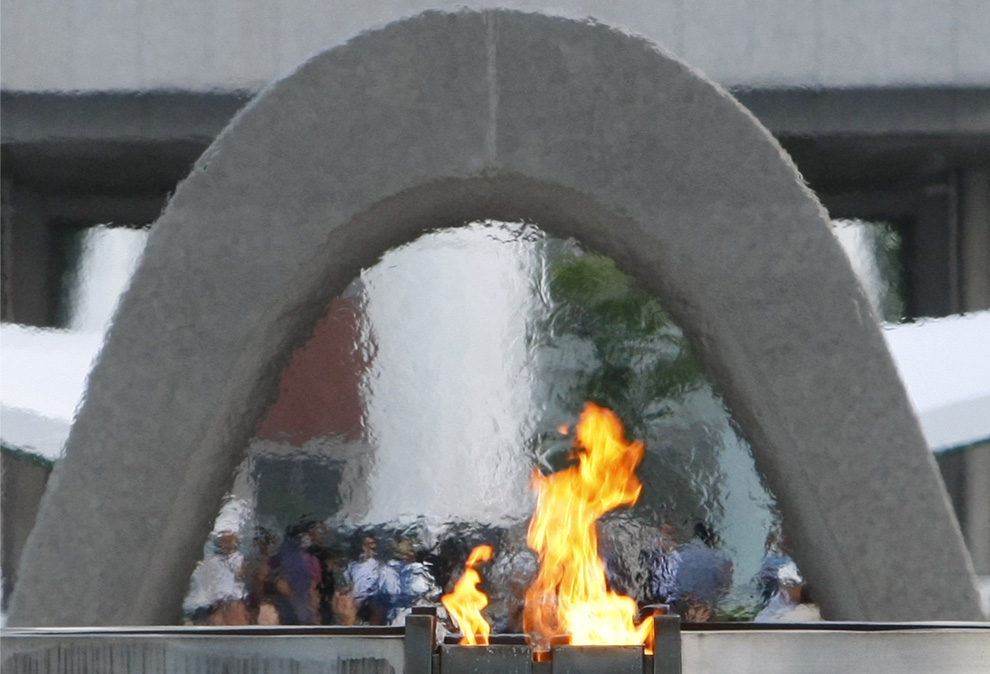
The Peace Flame has burned for the atomic bomb victims at the Memorial Cenotaph at Hiroshima Peace Memorial Park in Hiroshima, western Japan,Tuesday, Aug. 4, 2009. The flame has burned continuously since it was lit on August 1, 1964. It symbolizes the anti-nuclear resolve to burn the flame "until the day when all such weapons shall have disappeared from the earth." (AP Photo/Shizuo Kambayashi) #
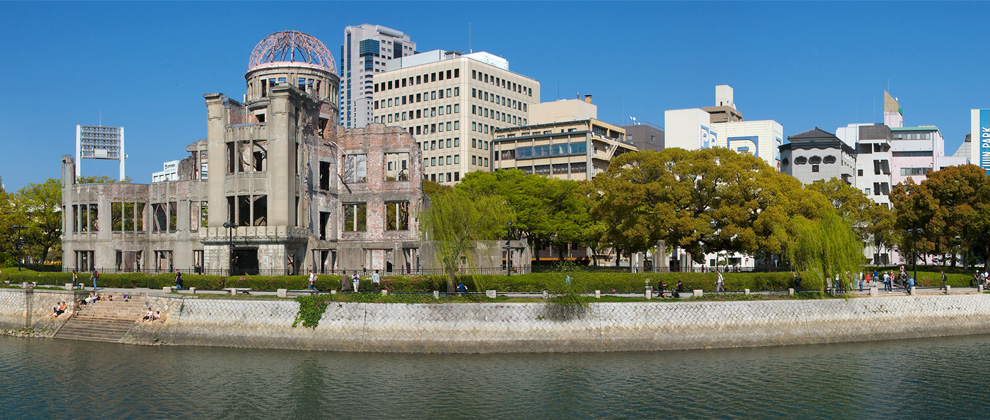
Hiroshima today - detail from a panoramic view of Hiroshima Peace Memorial seen on April 14, 2008. Full panorama available here. (Dean S. Pemberton / CC BY-SA)#
评论
目前还没有任何评论
登录后才可评论.




